Loading...
Excess winter deaths
Introduction
The purpose of the winter mortality measure is to compare the number of deaths that occurred in the winter period (December to March) with the average of the non-winter periods (August to November and April to July). Winter mortality is not solely a reflection of temperature, but of other factors as well. These include respiratory diseases and pressure on services, which have been more intense than usual during and following the height of the pandemic. Across England and Wales, 13,400 more deaths occurred in the 2021 to 2022 winter period compared with the average of the non-winter periods. 2021 to 2022 had the second-lowest number of winter deaths compared to non-winter deaths since 1950 to 1951. A low winter mortality index can be because of either a large number of deaths in the non-winter months (such as 2021 to 2022), or fewer deaths in the winter months [1].The winter mortality index (WMI) is a measure expressed as a ratio of the difference in all cause mortality during winter months (December to March) compared to the average in the non winter months (the preceding August to November and following April to July) [2]. The formula used in this calculation is below.
Figure 1: Winter mortality index formula

There is variation in the winter mortality index according to age and sex. The winter mortality index was highest for those aged 90 and over for 2021/22. National figures by age band and sex are presented below.
Figure 2: Winter mortality index by age group, sex and country, England and Wales, occurring between 2021 to 2022
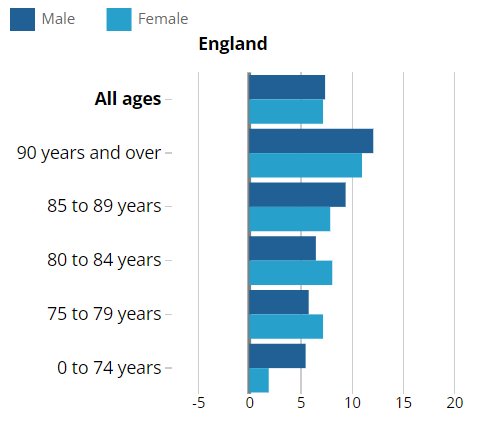 The Winter mortality index (WMI) is an important measure as it allows us to measure how successful policies are on successfully reducing deaths in the winter period.
The Winter mortality index (WMI) is an important measure as it allows us to measure how successful policies are on successfully reducing deaths in the winter period.Data Overview
All Age
Oldham's latest winter mortality index ratio is 6.1%. This is slightly higher than rates for the North West (8.2%) and the national rate (8.1%). It is important to remember that a low ratio doesn't necessarily means fewer deaths, but is a reflection of the difference between deaths that occurred in the winter and non-winter months. Oldham's rate is 5th highest across Greater Manchester and 6th highest amongst Oldham's NHS England nearest neighbour group.In 2020, the coronavirus (COVID 19) pandemic led to a large increase of deaths mostly in the non-winter months of April to July 2020. This has impacted the winter mortality index for 2019 to 2020. Because we rely on using the difference between deaths occurring in the winter and the average of non winter months; specifically, the scale of COVID 19 deaths during non winter months has fundamentally disturbed the data time series and so data for 2019 to 2020 should be interpreted with caution.
Figure 3: Winter mortality index ratio (%) trend
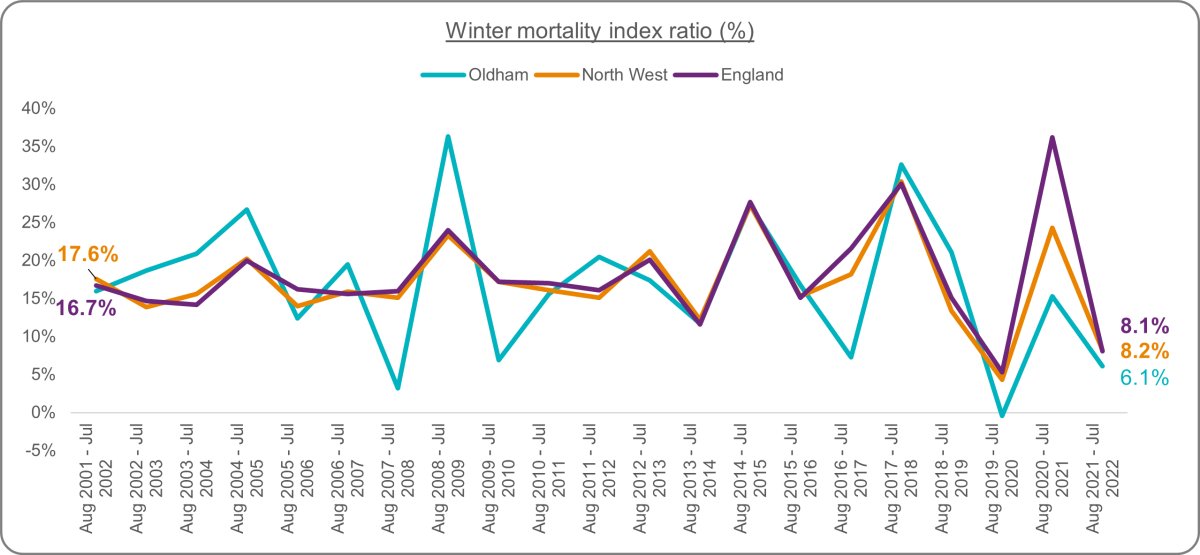 Source: OHID, based on Office for National Statistics data
Source: OHID, based on Office for National Statistics dataFigure 4: Winter mortality index ratio (%) across Greater Manchester
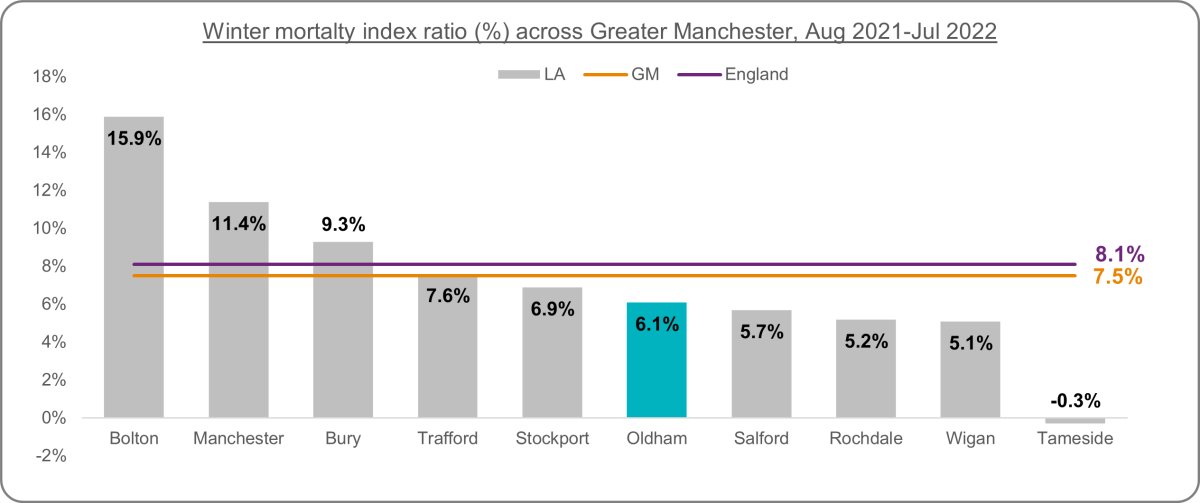 Source: OHID, based on Office for National Statistics data
Source: OHID, based on Office for National Statistics dataFigure 5: Winter mortality index ratio (%) across Oldham's NHS England statistical nearest neighbours
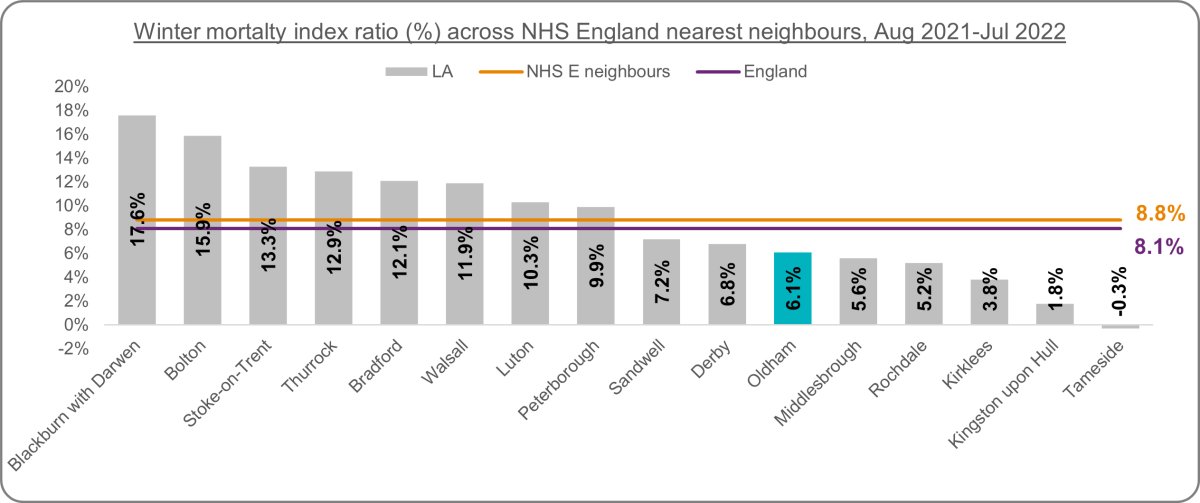 Source: OHID, based on Office for National Statistics data
Source: OHID, based on Office for National Statistics data Aged 85 and over
This measure has the same methodology as above, but relates only to those residents aged 85 and over. Oldham's latest winter mortality index ratio (13.1%) is higher than the North West average of 9.7% and slightly higher than the England rate of 11.3%. The same caveats as above apply in regards to the Covid-19 pandemic and interpreting this data with caution. Oldham's rate is 3rd highest across Greater Manchester and ranks centrally when compared to NHS England nearest statistical neighbours.Figure 6: Winter mortality index ratio (%) aged 85+ trend
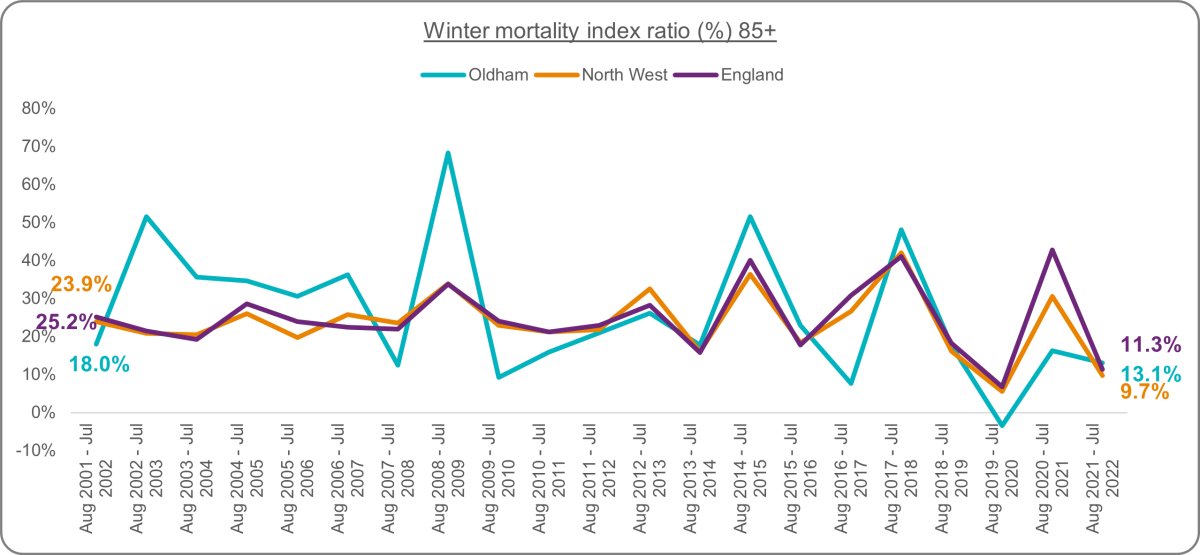 Source: OHID, based on Office for National Statistics data
Source: OHID, based on Office for National Statistics dataFigure 7: Winter mortality index ratio (%) aged 85+ across Greater Manchester
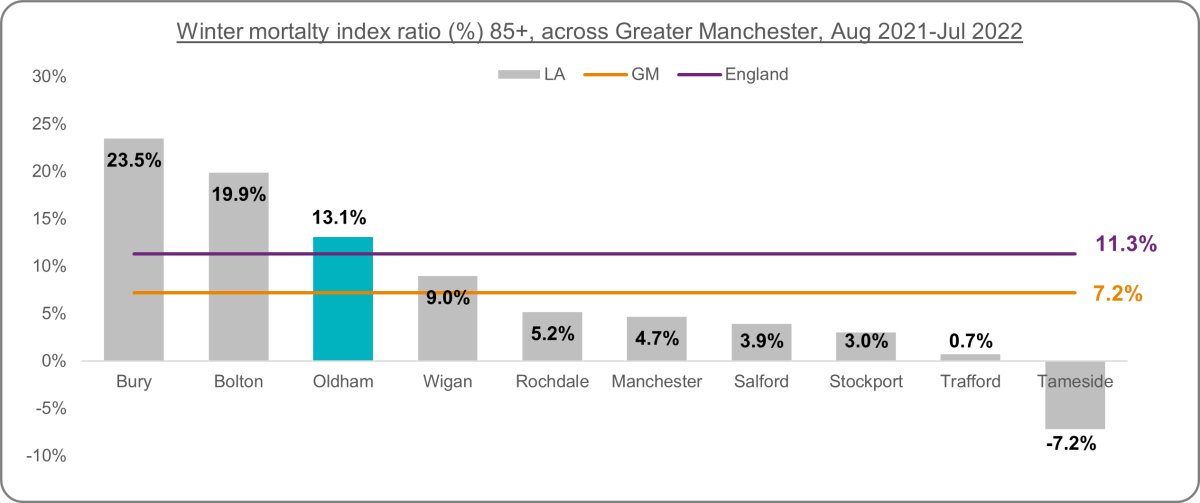 Source: OHID, based on Office for National Statistics data
Source: OHID, based on Office for National Statistics dataFigure 8: Winter mortality index ratio (%) aged 85+ across Oldham's NHS England nearest statistical neighbours
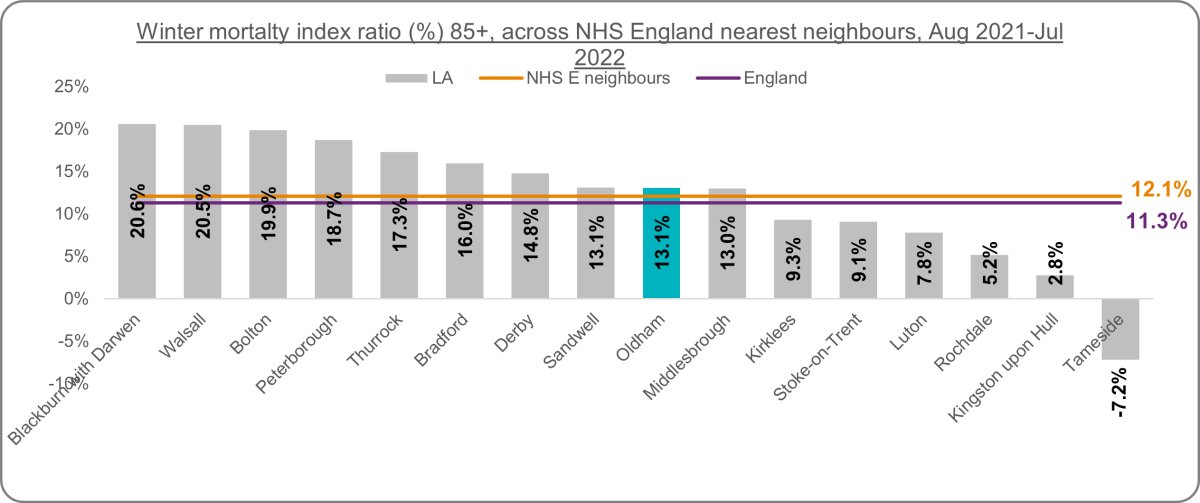 Source: OHID, based on Office for National Statistics data
Source: OHID, based on Office for National Statistics dataFurther Information & Resources
OHID Data ProfilesFurther data relating to the winter mortality index and contributing indicators.
ONS Winter mortality in England and Wales
Data for 2021 to 2022 (provisional) and 2020 to 2021 (final)
References
[1] Winter mortality in England and Wales: 2021 to 2022 (provisional) and 2020 to 2021 (final) - https://www.ons.gov.uk/peoplepopulationandcommunity/birthsdeathsandmarriages/deaths/bulletins/excesswintermortalityinenglandandwales/2021to2022provisionaland2020to2021final[2] OHID - https://fingertips.phe.org.uk/health-profiles#page/3/gid/1938132701/pat/15/par/E92000001/ati/6/are/E12000004/iid/90360/age/1/sex/4/cat/-1/ctp/-1/yrr/1/cid/4/tbm/1 accessed September 2024

